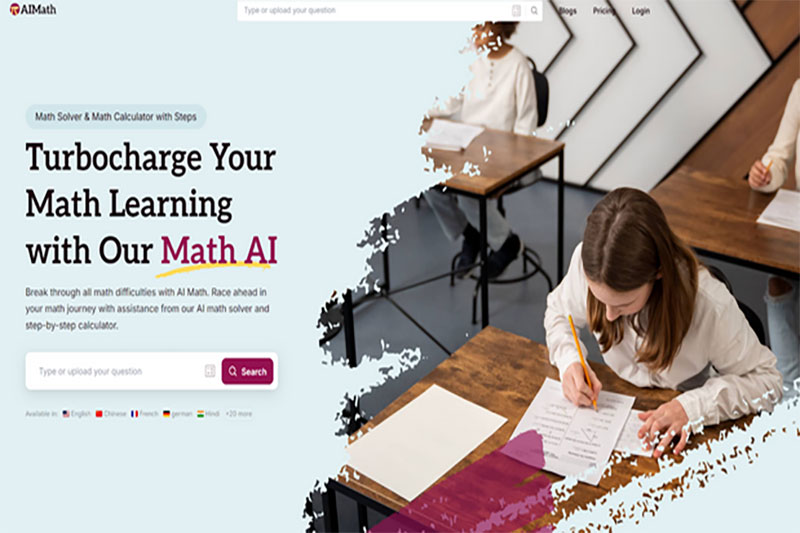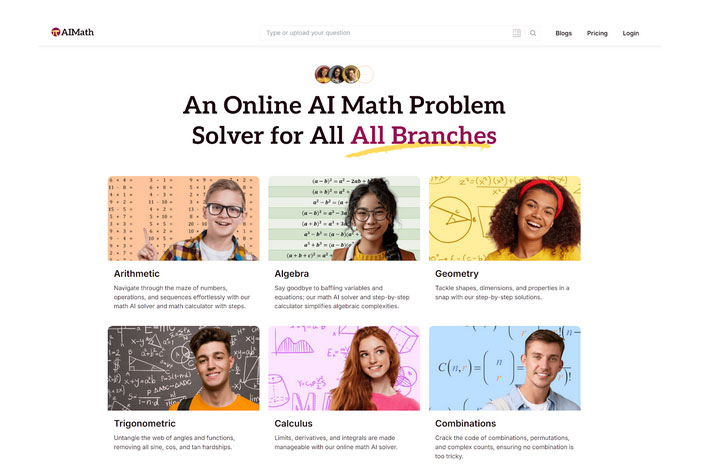Mathematics is a subject that many students find challenging. Whether it’s the complexities of algebra, the intricacies of calculus, or the logical reasoning required for geometry, math can often lead to frustration and anxiety. However, with the advent of artificial intelligence (AI), students now have access to powerful tools that can make learning math easier and more engaging. One such tool is AI Math, an advanced math solver and calculator that provides step-by-step solutions and explanations. This guide will explore how to effectively utilize AI Math and other strategies to enhance mathematical understanding and performance.

The Role of AI in Learning Math
AI has transformed various fields, including education. In mathematics, Math AI tools like AI Math offer significant benefits:
- Instant Solutions: Students can receive immediate answers to their math problems, reducing frustration and saving time.
- Step-by-Step Explanations: These tools break down complex problems into manageable steps, helping students understand the reasoning behind each solution.
- Accessibility: AI math solvers are available 24/7, allowing students to seek help whenever they need it.
- Personalized Learning: Many AI tools adapt to individual learning styles, providing tailored assistance that meets specific needs.
By leveraging these benefits, students can approach math with greater confidence and improve their overall performance in the subject.
Getting Started with AI Math
To effectively use AI Math as a learning tool, follow these steps:
Step 1: Identify Your Math Problem
Before using any math solver, it is crucial to clearly define the problem you want to solve. This involves understanding the question and identifying what concepts are involved. For example:
- Are you working on an algebraic equation?
- Do you need help with a geometry proof?
- Are you trying to solve a calculus problem involving derivatives?
Taking the time to comprehend the problem will make it easier to input into the AI tool.

Step 2: Input Your Problem into AI Math
Once you have identified your problem, input it into AI Math. You can do this in several ways:
- Typing: Simply type out the problem in the designated input box.
- Image Upload: If you have a handwritten or printed problem, you can upload an image of it. The photo math solver feature of AI Math will analyze the image and extract the relevant equations.
- Using Mathematical Notation: For more complex problems, using proper mathematical symbols and notation can help ensure that the AI accurately interprets your question.
AI Math is designed to handle various types of mathematical inquiries, from basic arithmetic to advanced calculus.
Step 3: Analyze the Solution Provided
After submitting your problem, AI Math will generate a solution. Here’s how to make the most out of it:
- Review Each Step: Take your time to go through each step of the solution provided by AI Math. This breakdown is essential for understanding how the answer was reached.
- Ask Questions: If something is unclear, consider rephrasing your question or asking for further clarification on specific steps. Many AI tools allow for follow-up questions that can enhance understanding.
- Use Additional Resources: If necessary, supplement your learning by consulting textbooks or online resources that explain similar concepts in different ways.
Step 4: Practice Similar Problems
To reinforce your understanding, practice solving similar problems on your own. Here’s how:
- Create a Study Plan: Dedicate specific times for practicing different types of math problems. Consistent practice helps solidify concepts learned through AI Math.
- Utilize Practice Exercises: Many online platforms offer additional exercises related to various math topics. Use these resources alongside AI Math to diversify your practice.
- Engage with Peers: Form study groups where you can discuss problems and solutions with classmates. Teaching others is also a great way to reinforce your own understanding.
Exploring Different Mathematical Concepts with AI Tools
AI Math covers a wide range of mathematical topics. Here’s how students can utilize it for various subjects:
Algebra
Algebra often involves solving equations and working with variables. With AI Math:
- Students can input linear equations or quadratic formulas and receive detailed explanations on how to manipulate variables and isolate solutions.
- The tool helps clarify concepts such as factoring, graphing functions, and solving inequalities through step-by-step guidance.
Geometry
Geometry requires understanding shapes, sizes, and properties of space. Using AI Math:
- Students can solve problems related to calculating areas, volumes, and perimeters.
- The step-by-step solutions provided by AI Math help students visualize geometric relationships and apply relevant formulas correctly.
Trigonometry
Trigonometry deals with angles and their relationships in triangles. With AI Math:
- Students can tackle trigonometric identities and equations.
- The tool provides clear explanations about sine, cosine, tangent functions, and their applications in real-world scenarios.
Calculus
Calculus introduces concepts like limits, derivatives, and integrals. With the help of AI Math:
- Students can find derivatives of functions and understand their significance in terms of rates of change.
- The tool assists in solving integral problems while explaining fundamental concepts such as area under curves.
Maximizing Your Learning Experience with AI Tools
To fully benefit from using AI tools like AI Math in your studies, consider these strategies:
Engage Actively with Solutions
Rather than passively accepting answers from AI Math:
- Take notes while reviewing solutions.
- Summarize each step in your own words to reinforce understanding.
This active engagement helps deepen comprehension and retention of mathematical concepts.
Combine Tools for Comprehensive Learning
While AI Math is a powerful resource:
- Consider using it alongside other educational tools such as video tutorials or interactive quizzes.
- Platforms like Khan Academy or Coursera offer structured courses that complement what you learn through AI tools.
Set Clear Learning Goals
Establish specific objectives for what you want to achieve in your math studies:
- Aim for mastery in particular topics before moving on.
- Track progress over time by revisiting previous problems and assessing improvements.
Having clear goals keeps motivation high and helps maintain focus during study sessions.
Seek Help When Needed
If challenges persist despite using AI tools:
- Don’t hesitate to reach out for additional support from teachers or tutors.
- Online forums or study groups can also provide valuable insights from peers who may have faced similar challenges.
Conclusion
Mastering mathematics may seem daunting at first glance; however, utilizing advanced tools like AI Math can significantly ease this journey. By following a structured approach—identifying problems clearly, engaging actively with solutions, practicing regularly, and seeking help when necessary—students can enhance their understanding and performance in math. Embracing these innovative resources not only builds confidence but also fosters a deeper appreciation for the subject itself. As technology continues to evolve within education, leveraging these tools will undoubtedly pave the way for academic success in mathematics and beyond.









